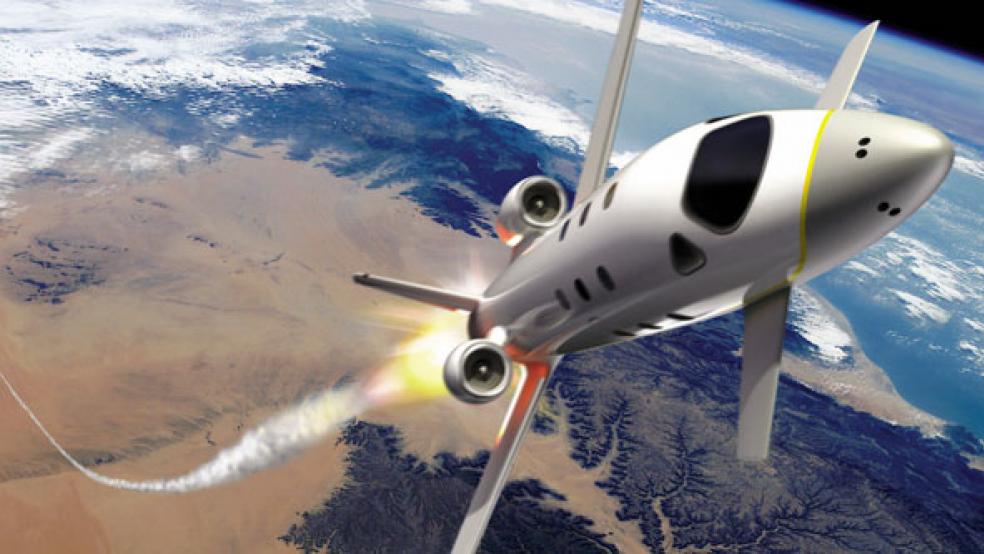Dramatic rocket launches capture our attention, but opportunities to invest in the commercial space industry (also known as NewSpace) should not be overlooked.
In contrast to the traditional model of large government-run programs, NewSpace is a global industry of private companies and entrepreneurs who primarily target commercial customers, are backed by risk capital seeking a return and profit from innovative products or services developed in or for space. As a result, from large publicly traded companies to nimble start-ups, there have never been more (or better) opportunities to invest in the future of space.
From 2011 to today, we have watched a universe of 100 companiestargeting commercial space opportunities increase to 700 companies worldwide. Roughly 70 percent of these companies are privately held, limiting the opportunities for investors. But the other 30 percent are publicly traded companies.
Related: The New Space Race, and Why Nothing Else Matters
A $250 billion package delivery
Let's break down some of the more established niches within the investable universe of space-related companies and become familiar with a few key terms: packages, trucks and primes. For the most part, the publicly traded companies seeking to profit from commercial space opportunities are focused on the manufacturing, operating and management of satellites (otherwise known as the packages). These companies currently generate $250 billion in annual revenue, making them by far the largest opportunity in the industry. Some companies in this vertical include DISH Network, DigitalGlobe, Garmin, Iridium and SES. They provide satellite services, either through broadcasting, imaging, navigation or communications, and the number of companies providing these services is growing.
Take DirecTV—which is set to be acquired by AT&T for nearly $50 billion this year. If you don't think of it as a "space" investment, remember that it would not exist without its fleet of satellites and the rockets that send them to space.
Another is the Stanford University-born satellite start-up Skybox Imaging. It was recently acquired by Google for $500 million.

Busting the monopsonies
The "trucks" that take the "packages" to space have been large government contractors, such as Boeing and Lockheed Martin. The "primes" generally focus on government contracts—e.g. military and NASA—as key customers for their rockets and satellites.
A shift has occurred in the past few years as companies like Orbital ATK (Orbital Sciences and Alliant Techsystems plan to merge), Aerojet Rocketdyne (owned by GenCorp), Harris and Airbus gradually move away from that traditional model of government monopsonies—one buyer and many sellers—to focus on more scalable, diverse commercial customers. This shift has not only allowed newer, smaller and more agile players to obtain funding from some large investors but also presents more market opportunities for both new and existing players.
SpaceX, though more obvious as a play on the space theme, shows how quickly companies in the sector are growing. When we began tracking the company in 2010, it was valued at roughly $250 million. Today we value the company at 10 times to 20 times its 2010 valuation, and it's reportedly raising capital at a value as high as $10 billion.
There is an emerging trend of established companies recognizing the vast potential space holds, but they are not necessarily thought of as players in the space race.
For instance, FedEx recently launched its Space Solutions Desk to increase its exposure to the industry by streamlining the transportation of satellites from production facilities to launch facilities.
Related: Space Race 2.0: Google Searches for an Edge
In addition to Google's buying Skybox, agricultural sciences giant Monsanto purchased The Climate Corporation in late 2013—it provides crop insurance to farmers using satellite imagery and data analytics.
Investors interested in the sector must be aware of the risks and potential pitfalls.
When it comes to rockets (and the companies that build and launch them), most pundits focus on regulatory and political risks associated with the difficult business of sending things to space. These risks should be recognized, but more importantly, investors should understand that the greatest risks have to do with the following four factors: poor management decisions, uncertain markets, lack of capital, and technological challenges.
By becoming informed, you may see more than a rocket take off at the next launch.
This article originally appeared in CNBC.
Read more at CNBC:


